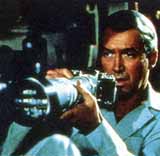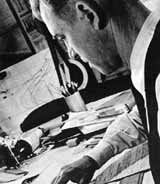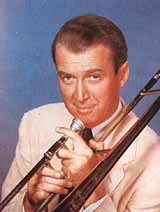
 Some Historical Reflections on the Paradoxes of Stardom in the American Film Industry, 1910-1960 by Brian Gallagher |
|
Part Seven: The re-emergence of Jimmy Stewart, who went on to become the leading male box office star of the 1950s, was emblematic of the growing power of individual stars, but even more indicative of the enormous, but largely hidden, power wielded by agents in the period. For every Cagney or Davis intent on getting free of studio control, there was star in Hollywood who, like Gable at MGM, had managed to settle relatively comfortably into the system of studio control (in Gable's case, after some early, minor rebelliousness) and was not ready to take on the system in the 1940s. For many, the studio had become a community within a community, able to supply them with a public identity that, if not exactly the identity they wanted, at least paid well and was less work than trying to construct that identity on their own. By the mid-1940s, though, with more and more independent production companies working under contract to the studios, it was possible to take advantage of the greater freedom that had been won for actors. Some new actors, like Burt Lancaster, carefully began constructing careers that would distance them from any single company, avoid typecasting them, and carry them into the post-studio era. (E.g., Lancaster, after two "tough guys" roles at the start of his career, The Killers and Brute Force, took a pay cut to appear in Arthur Miller's All My Sons.).21
|
 For years, Warners and the other studios had anticipated losing a precedent-setting case to the actors who regularly sued them. That loss came in 1943-44, when Olivia de Havilland, upset about her constant loan-outs and the poor roles she was receiving when at the studio, filed suit against Warners:
For years, Warners and the other studios had anticipated losing a precedent-setting case to the actors who regularly sued them. That loss came in 1943-44, when Olivia de Havilland, upset about her constant loan-outs and the poor roles she was receiving when at the studio, filed suit against Warners:




